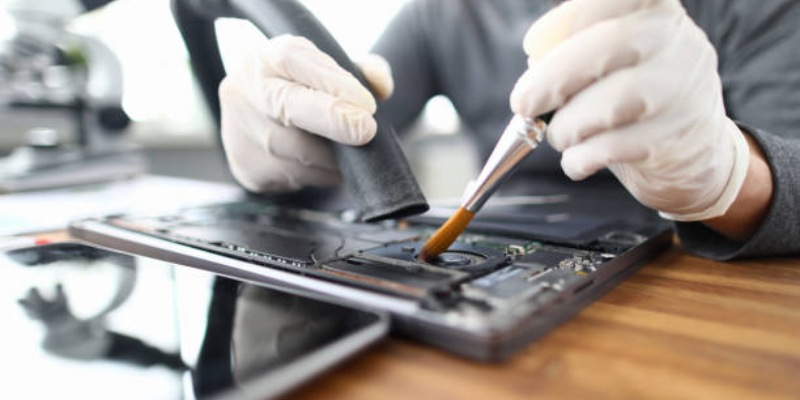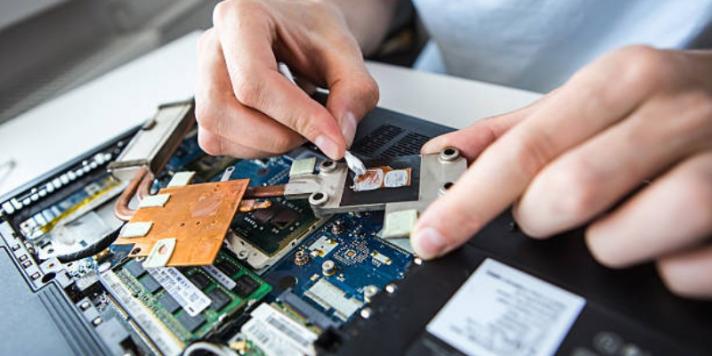Best Practices For Safely Cleaning Electronic Devices
It's a digital world we live in, and nothing is more prevalent than electronic gadgets, from cell phones to computers. Over time, these gadgets become caked with dirt, oils, and germs. However, electronics have sensitive components unlike a surface, such as a table or floor. Moisture can damage circuits. Harsh chemicals may ruin screens. Cleaning them safely means using them longer and lowering health risks. Phones or keyboards are germ-infested and can cause sickness, so operating companies must clean them frequently.
Choosing The Right Tools For The Job
Some cleaning supplies are not designed to be used with electronics. Some work better than others. Bleach or ammonia-based cleaners could crack screens or leave streaks, for example. Instead, use gentle options. Wipe it down with a clean microfiber cloth, rubbing lightly. Pair it with a cleaner for electronics, such as 70% isopropyl or ethyl alcohol. These solutions are quick-drying and won't harm most surfaces. Another safe choice, particularly for screens, is distilled water. Do not use paper towels or other rough materials; these could scratch the delicate regions.

Step-By-Step Guide To Cleaning Electronics
Start by turning off and unplugging devices. This step prevents electric shocks and protects internal parts. Next, dampen a cloth with cleaner and wring it out so it's not dripping. Wipe surfaces gently, focusing on high-touch areas like buttons, keyboards, and screens. For tight spots, use cotton swabs or compressed air. Never spray liquids directly onto gadgets. Always apply cleaner to the cloth first. After cleaning, let the devices air dry completely before turning them back on.
Common Mistakes To Avoid
Many people make errors when cleaning electronics. One common mistake is using too much liquid. Even water-resistant devices can suffer damage if moisture seeps inside. Another error is scrubbing too hard. Pressure can crack screens or loosen parts. Also, some users forget to clean accessories like chargers or cases. These items collect dirt and germs, too. Lastly, improperly storing cleaning supplies can lead to accidents. Keep sprays away from heat or direct sunlight to avoid leaks or chemical reactions.
Keeping Shared Devices Germ-Free
Shared electronics, like office computers or public tablets, need extra attention. These items pass through many hands daily. Clean them at least once a day, or more often during cold and flu season. Use single-use disinfectant wipes for quick touch-ups. In workplaces, create a cleaning schedule so everyone shares responsibility. Teach staff or family members proper techniques to avoid damage. Posting simple instructions near shared devices can help.
How To Handle Tough Stains And Buildup
Stubborn grime may resist regular wiping. For these cases, use a bit cleaner but stay gentle. A toothbrush with soft bristles can scrub around keys or ports. For sticky residues, like dried food on a keypad, lift debris with a plastic scraper. Avoid metal tools, which scratch surfaces. If a screen has smudges, use a pre-moistened alcohol wipe. Rub in circular motions until marks fade. Always test new methods on a small area first.
Storing And Handling Cleaning Supplies Safely
Proper storage matters as much as choosing the right tools. Keep alcohol-based sprays in cool, dry places away from open flames—store clothes in sealed containers to prevent dust buildup. If using reusable wipes, wash them regularly to avoid spreading germs. Compressed air cans should stay upright to prevent leaks. Teach children to treat cleaning supplies as hazards, not toys. In offices, assign a specific cabinet for these items to avoid misuse.

Cleaning Different Types Of Electronics
Not all gadgets need the same approach. Phones and tablets require care around cameras and charging ports. Laptops need attention for their keyboards and trackpads. For screens, use a solution of equal parts water and alcohol. Earbuds and headphones need small tools to reach crevices. Printers and gaming consoles gather dust in vents, so use soft brushes to remove particles. Always check the manufacturer's guidelines for specific advice.
The Role Of Regular Maintenance
Cleaning electronics isn’t a one-time task. Regular maintenance prevents grime buildup and extends device life. Set reminders to clean gadgets weekly. For high-use items, daily touch-ups take just seconds. Over time, this routine becomes a habit. Regular care also makes it easier to spot early signs of wear, like cracked screens or loose parts. Addressing issues early saves money and avoids sudden replacements.
Balancing Safety And Effectiveness
The goal of cleaning is to protect both people and gadgets. While killing germs matters, damaging devices defeats the purpose. Stick to mild cleaners and soft tools. Avoid mixing chemicals, which can create harmful fumes. If unsure about a product, test it on a small area first. Prioritise safety by unplugging devices and working in well-ventilated spaces. When in doubt, follow guidelines from experts and manufacturers.
Creating a Routine For Long-Term Device Health
Consistency is key to safe electronics care. Start by setting a weekly cleaning schedule. Include tasks like wiping phones, keyboards, and remote controls. For shared devices, assign specific disinfecting times. Use visual cues, like placing clothes and sprays near gadgets, to encourage regular use. In schools or offices, post signs to remind people to clean up after use. Over time, these habits become second nature.
Environmental Considerations
Cleaning electronics can impact the planet. Single-use wipes and sprays contribute to waste. Opt for reusable clothes and refillable bottles when possible. Choose eco-friendly cleaners labelled as safe for electronics. Dispose of old rags and packaging correctly. For devices nearing end-of-life, recycle them through certified programs. Small changes reduce environmental harm while keeping gadgets clean.

Long-Term Benefits Of Safe Cleaning Practices
Regular, gentle cleaning pays off over time. Devices last longer, saving money and reducing e-waste. Cleaner gadgets also support better health by lowering the spread of germs. Workspaces feel more organised and professional. Families notice fewer sick days. Students stay focused with reliable tools. The effort invested in safe cleaning builds a healthier, more sustainable lifestyle.
Final Tips For Success
Start small by focusing on one or two devices. Learn their specific needs before tackling more items. Keep cleaning supplies nearby to make the process easy. Share tips with coworkers or family members to build a culture of care. Stay updated on new products and methods as technology evolves. With time, safe electronics cleaning becomes a seamless part of daily routines.
By following these steps, anyone can protect their gadgets and health. Safe cleaning ensures electronics work reliably while reducing risks. Whether at home, school, or work, these practices create cleaner, safer spaces for everyone.